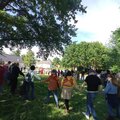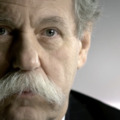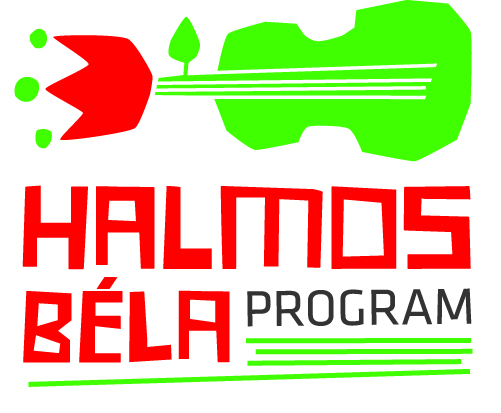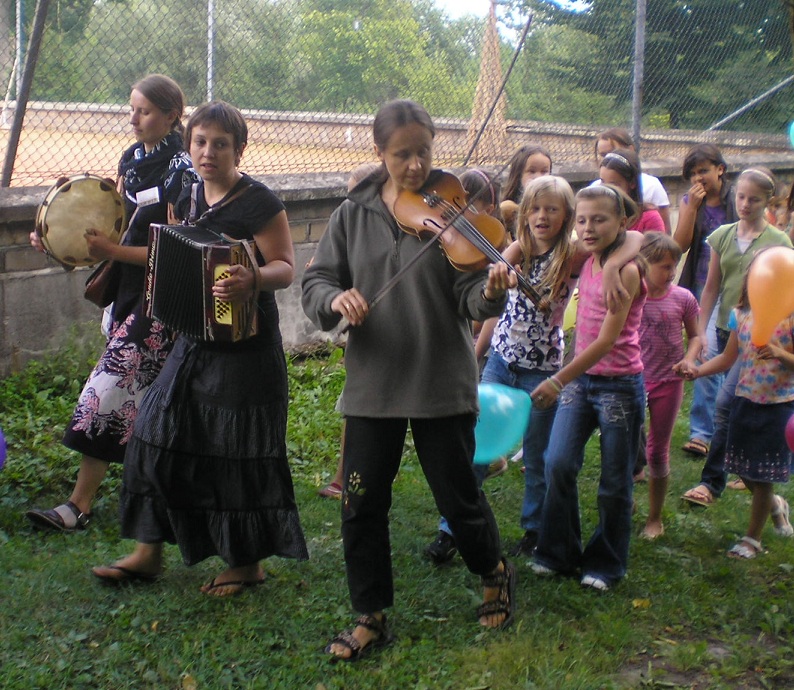
In 2008 I visited another summer camp organized by the Dom Tańca (’Dance House’) Foundation of Poland. This camp took place in a small town called Szczebrzeszyn in the Biłgoraj District of the Lublin Voivodeship, which is the part of the historical macroregion of the so-called Little Poland (Małopolska). Biłgoraj is a centre for a very interesting ethnographical region, which has its unical characteristics of traditional costumes, music and history.
It has always been the meeting point for different (Polish, Ukranian, Yiddish-Jewish and partly Belarusian) cultures before the Second World War. These characteristics are also can be found in Szczebrzeszyn, as for example the cultural centrum of the town is a former synagogue, despite the fact that there are no Jews anymore in this region after the holocaust.
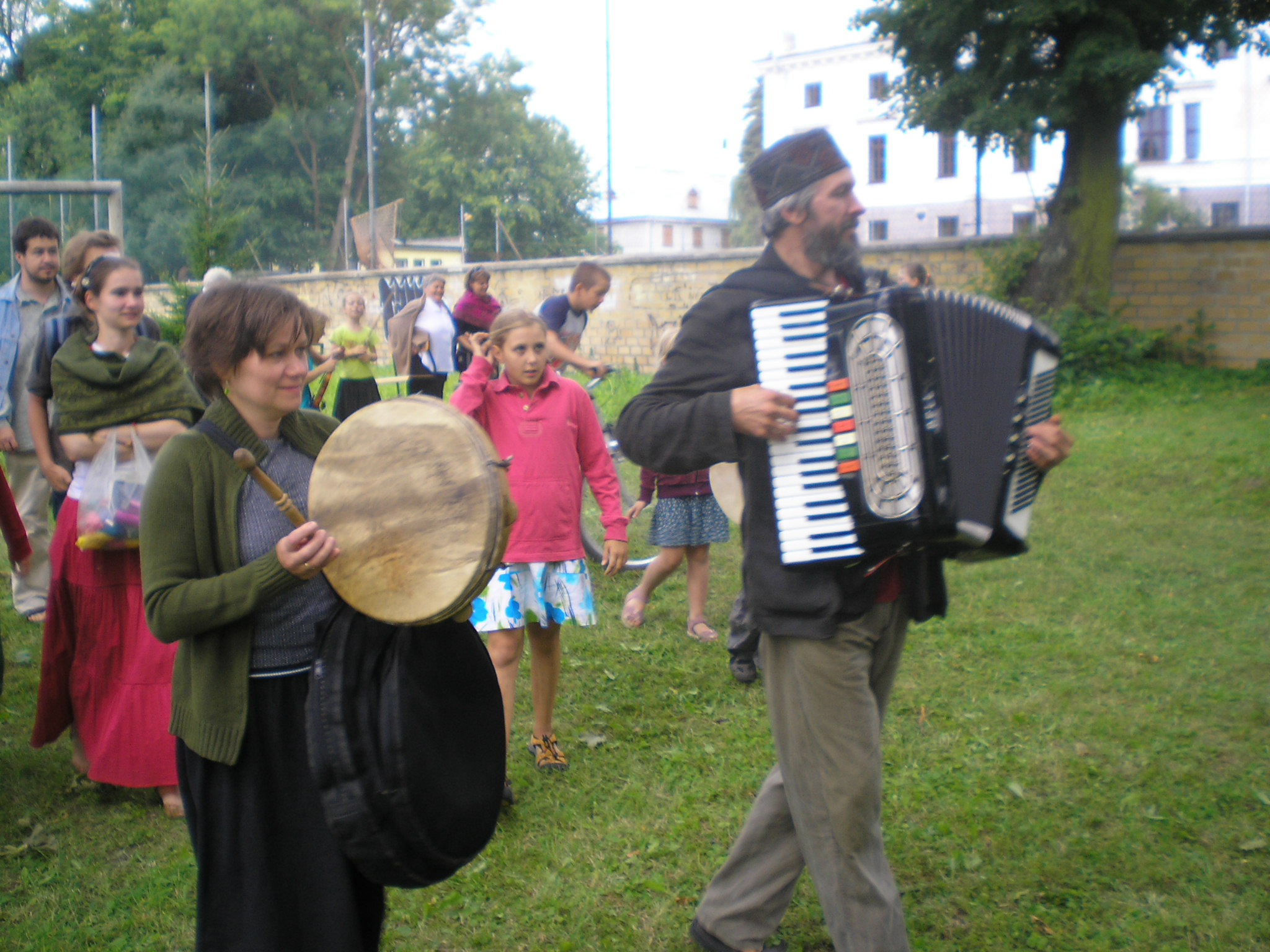
The program of the camp was organized to learn about three main topics: the meeting of different languages and culture, the stringed instruments of this region and the traditions of epic poetry in the Polish and Ukranian culture.
It was in Szczebrzeszyn where I could see for the first time how important is the role of Ukranian folk songs and the methods of Ukranian polyphonic singing in the Polish dance house movement. It was very similar for me to the role of the popularity of Romanian and (partly the Slovakian) dances in the Hungarian movement. I had the impression that such methods and cultural meetings can help to heal the wounds of historical harms between different nations.
The teachers for the Ukranian polyphonic singing were Yaroslav Kryshko, folk musician and ethnographer from Kyiv, Taras Shumeyko, co-editor of the Ukranian broadcasts of the Polish Radio and Serhiy Petrychenko, musician and stage director for interesting historical mystery theatre plays.
Guests of the camp could also see an amazing one-man play of the NN Theatre of Lublin in the former synagogue based on Isaac Singer’s (Icek Zynger’s) short stories and tales as the demonstration of the old Jewish culture in Poland.
We also had the occasion to know many different types of the stringed instruments of Biłgoraj and Zamość region. One of these instruments was the suka (or suka biłgorajska) which has a very interesting history.
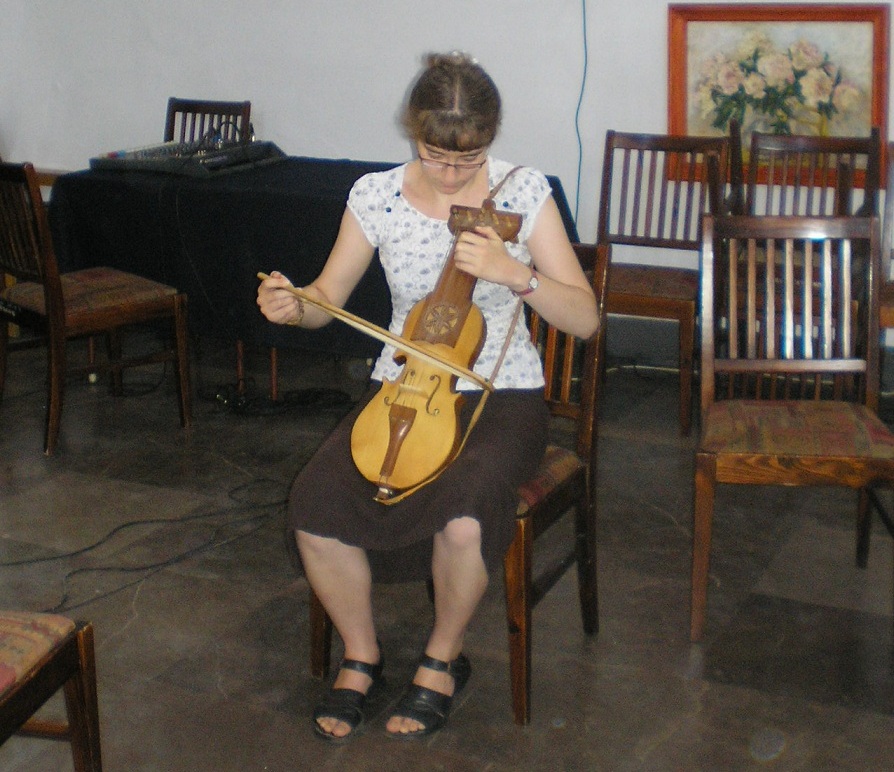
That instrument is similar to these ones which are used widely by Turkic and Altaic peoples of Central Asia, so maybe it was come to Poland with the Crimean Tartars in the early modern period. By the XXth century the suka was extinct in Polish villages (maybe it was replaced mainly by violins), but in the 1990s Zbigniew Butryn, a famous instrument maker reconstructed it after many pictures of ethnographers from the XIXth century. So suka had its renaissance in the Polish folk dance house movement: more and more people had learned to play it in the last few years. The playing on the suka was taught personally by Zbigniew Butryn in this camp.

Another important instrument of this region was the hurdy gurdy. While the violin and the suka were tools for dance music, the hurdy gurdy was the instrument of bards, epic storytellers (unlike in Hungary, where musicians used and use it for dance music as well). Guests could learn to play on the hurdy gurdy and meet with the most famous (and maybe also the most creative) maker of this instrument in Poland: Stanisław Wyżykowski.
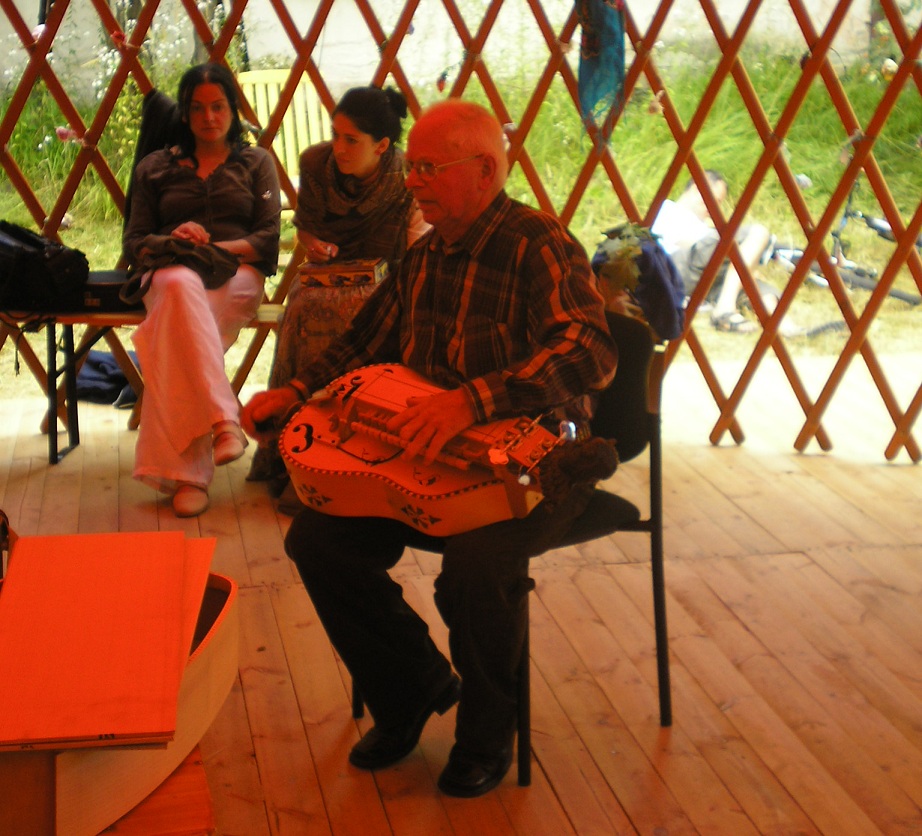
He and his young apprentice, Stanisław Nogaj told us a lot about the making of stringed instruments and the showed us many examples of hurdy gurdy with usual and unusual shapes, as the result of their artistic sense and creativity.
The third instrument which I could observe in Szczebrzeszyn was the bandura. It is kind of a national symbol for the Ukranian folk musicians. It was the instrument of Cossack storytellers as well. In the camp there were no lessons for bandura playing, but our friend, Yaroslav Kryshko played on it many times at the concerts and he also sang some beautiful Ukranian (mainly Cossack) ballades.
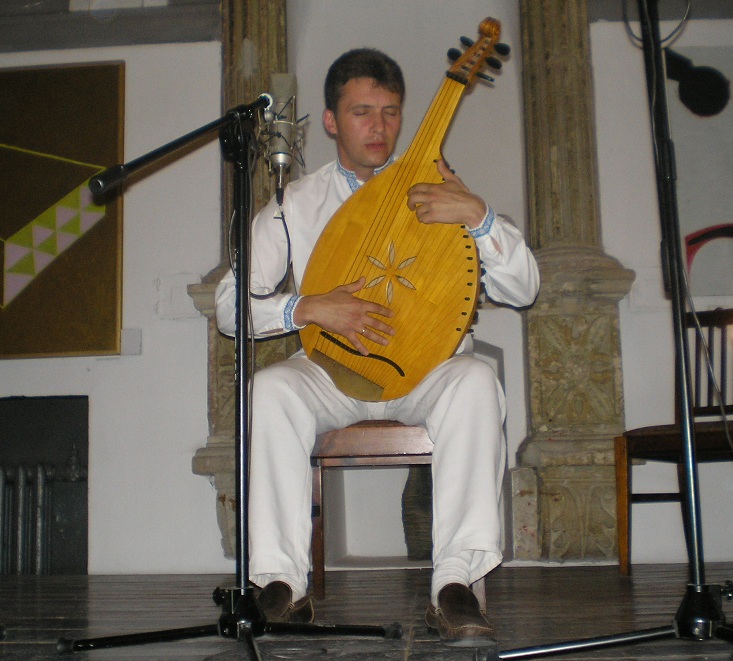
As I said before the third main topic of the camp was the tradition of epic poems and storytelling with music. There were lot of different programmes on this topic in the camp. We learned religious and biblical ballades from the Men’s Choir of Godziszów Village. They also taught us guerilla songs from the II. World War. It is interesting that many of these songs exist both in Polish and in Ukranian language with very similar texts, besides the fact that they were sung by enemies. (The Polish and Ukranian guerilla groups fought mainly against each other in this region in World War, sometimes even in a very cruel ways.)
Jacek Hałas (member of Bractwo Ubogich, the founder group of the Polish folk dance house movement) and his wife Alicja Hałas also demonstrated the tradition of the German Bänkelsängers. These singers were the showmen of the market places (and sometimes also the messengers between different regions) who sang epic poems of humorous or even horrorific stories with music, while another member of their group showed the pictures of the story, like in an early comic book. Katarzyna Szurman, the famous musician of old accordion sang different Warsaw city ballades (which are also often sensational stories about thieves, burglars, robbers and even killers).
But the most interesting event of the camp was the Competition of Modern Bards. It was an experimental challenge of the Dom Tańca Foundation for professional and amateur poets and musicians to write epic poems or ballades about nowadays’ current events. On the last night of the camp, some musicians sang the best poems of the competition. (There were some competitors who enterprised to sing their own poem, but in most of the cases the performances were surprises for the poets as well.) The last and the funniest performance was a parody of a ballade about an epic but unsuccessful fight of eleven knights, in which case the audience could recognize the tale of the matches of the Polish national football team at the 2008 UEFA Championship.
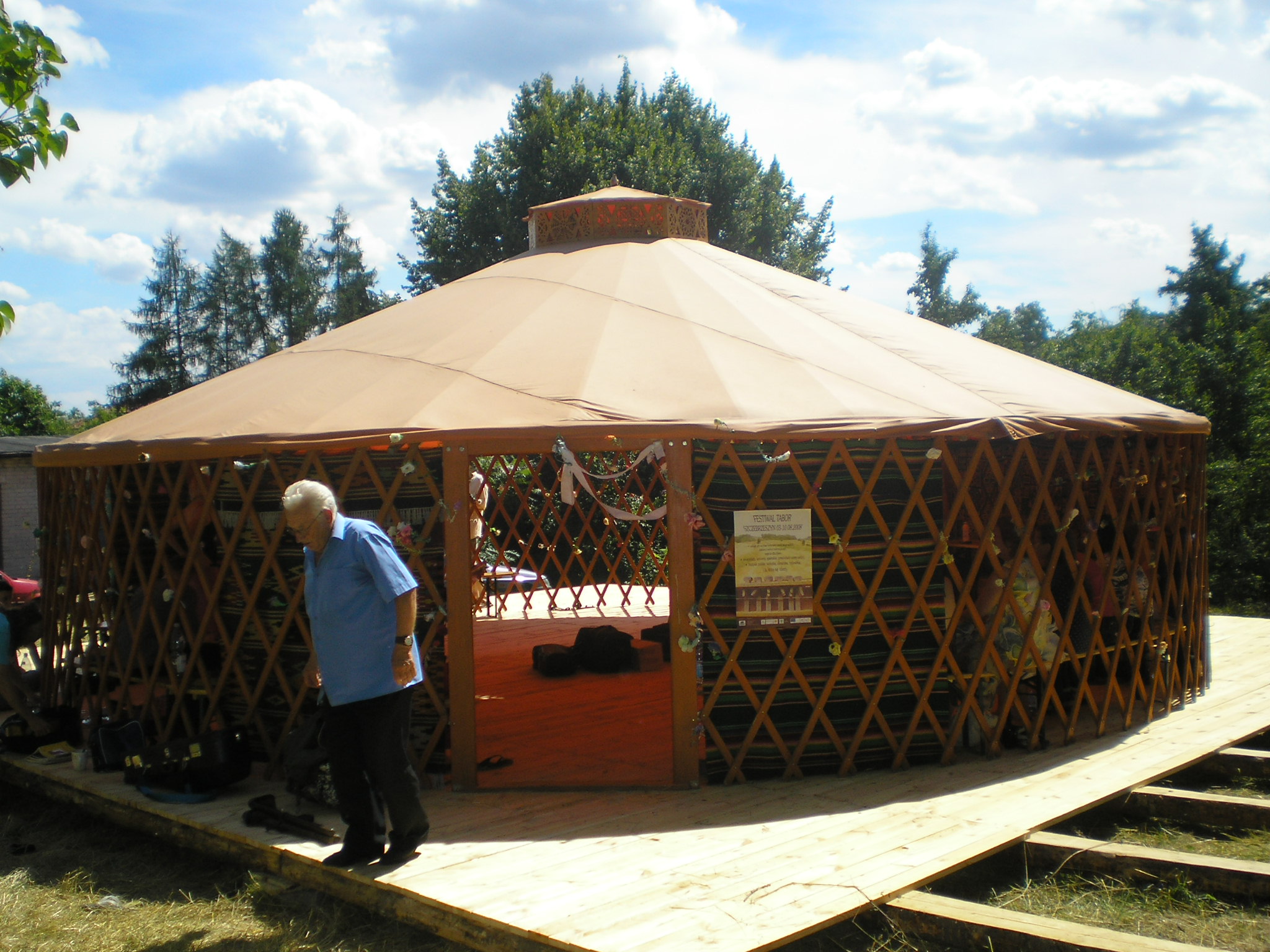
Obviously there were also some great dance house parties as well in Szczebrzeszyn. Fortunatelly Alicja and Jacek Hałas built a yurt for that case which had a very special atmosphere. What is interesting most of the Polish fans already knew the Hungarian circle dances of Moldavia as well, and they liked them very much, and also created their own Polish language dance shouts for them.
I think this camp was not only a very joyful, but a very informative and instructive for me as a Hungarian dance house fan as well, because I learned a lot not only about the folklore of the Biłgoraj region, but also about the creative methods of keeping our traditions alive.
More Warsaw Return articles here
THE INTERVIEW WAS SUPPORTED BY THE WACŁAW FELCZAK FOUNDATION
![]()

A bejegyzés trackback címe:
Kommentek:
A hozzászólások a vonatkozó jogszabályok értelmében felhasználói tartalomnak minősülnek, értük a szolgáltatás technikai üzemeltetője semmilyen felelősséget nem vállal, azokat nem ellenőrzi. Kifogás esetén forduljon a blog szerkesztőjéhez. Részletek a Felhasználási feltételekben és az adatvédelmi tájékoztatóban.
